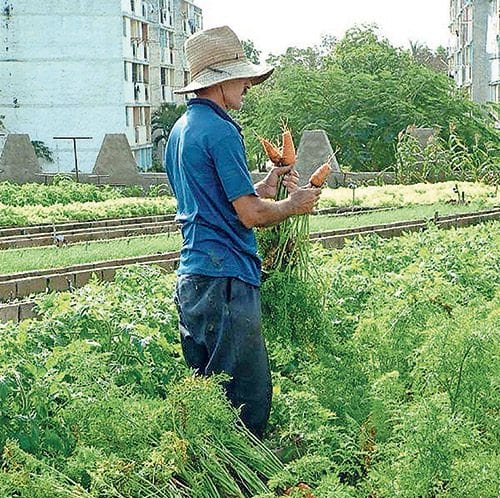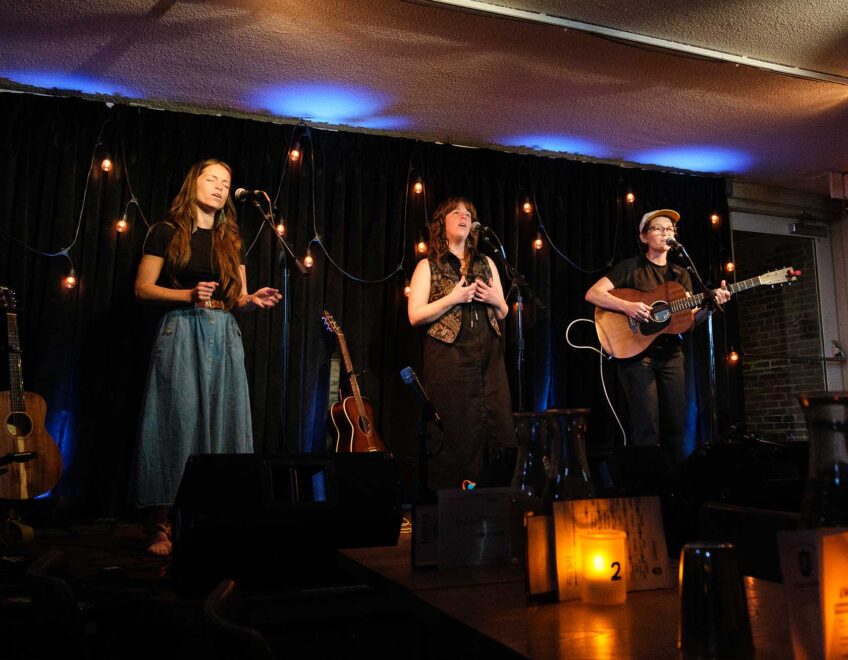Flash in the Pan: Growing a future through farming in Cuba
In becoming more agrarian, Cuba is taking hold of its destiny

Thirteen years ago on New Year’s Day, I arrived in Cuba with a group of students from the University of Montana in tow. We were there on a hard-to-get educational permit. Our goal was to get a handle on the state of Cuba’s agriculture system, which, thanks to geopolitical circumstances, had been thrust in an aggressively organic direction.
We also wanted to get our mouths around some Cuban food, and our minds around the enigma that is Cuba.
Sopa de Ajo
- 3 tablespoons olive oil
- 6 slices white bread, cubed
- 12 garlic cloves, minced
- 1 28-ounce can peeled whole tomatoes, drained and chopped
- 1 teaspoon paprika
- 1 bay leaf
- 4 cups chicken stock
- ¼ cup sherry
- 6 eggs, yolks and whites separated
- Parsley
Sauté cubes of bread in hot oil in a pot until they begin to brown. Stir in minced garlic and sauté for another minute — just long enough to cook the garlic slightly. Mash the garlic and the bread together with a spoon.
Add tomatoes, paprika, bay leaf, stock and sherry. Bring to a boil, reduce heat to low and simmer for one hour. Salt and pepper to taste.
Add three tablespoons of the hot broth to the egg yolks, beating constantly, to temper them. Add egg yolks to the broth and whisk in rapidly until smooth.
Quickly whisk in the unbeaten egg whites until mixed completely. Bring the soup to a boil, remove from heat. Garnish with parsley and serve.
Agroecology sprouts
Before the collapse of the Soviet Union, Cuba’s agriculture system was characterized by monocultures of sugar and tobacco. These crops were sent to the USSR in exchange for gas, food, agrichemicals and equipment. When the Soviet Union tanked, Cuba suddenly had to grow a lot more than sugar and tobacco, but without the inputs and supplies on which it had grown dependent.
Politicians in the U.S. saw this as an opportunity to tighten the noose on Castro’s regime, and made the embargo more severe by passing the 1993 Torricelli Bill (aka the Cuban Democracy Act), which made it illegal for U.S. companies to do business with foreign subsidiaries that did business with Cuba. This isolated the nation even more. The average Cuban’s caloric intake dropped to as low as 1,000 calories per day. Fertility rates dropped and abortion rates climbed.
The Cuban government began breaking up the large state-owned plantations and putting them in the hands of the workers, who turned many of them into vegetable farms, orchards and animal pasture. In cities, vacant lots, yards and rooftops were converted to gardens. Agroecology, a powerful agricultural paradigm in which farms are treated as ecosystems, took firm root in Cuba. Farmers markets appeared, becoming one of the first signs of the emergence of a free market in Cuba.
Despite long odds, the people were fed. Average caloric intake rose above 2,500 per day. Infant mortality dropped to lower levels than in the U.S. But these impressive metrics came with a hefty price tag in terms of civil liberties. It was a common occurrence for members of our group to be pulled aside and told, in hushed tones, about the government spies, the threat of prison, and lack of freedom and opportunity.
Finding its flavor
We made a lot of friends in Cuba, smoked some fine cigars, heard some amazing music and ate some surprisingly bland food.
Given the agricultural strides Cuba has made, the underwhelming food surprised me. One of the world’s hottest peppers, the habanero, is named after residents of Havana, but the cuisine was devoid of spice.
This isn’t to say that Cuban food is inherently bland, but that the Cuban flavor has gone into hiding — holing up in some private homes, and offshore, but rarely found in restaurants.
I’ll leave you with a recipe for Sopa de Ajo, or garlic soup. There aren’t any hot peppers, but the paprika hints at the Spanish roots of Cuban cuisine. The recipe comes from the wonderful cookbook “Three Guys from Miami Cook Cuban” (Gibbs Smith).
Ari LeVaux writes Flash in the Pan, a syndicated weekly food column that’s appeared in more than 50 newspapers in 25 states. Ari lives in Montana and New Mexico and can be reached at flash@flashinthepan.net.






